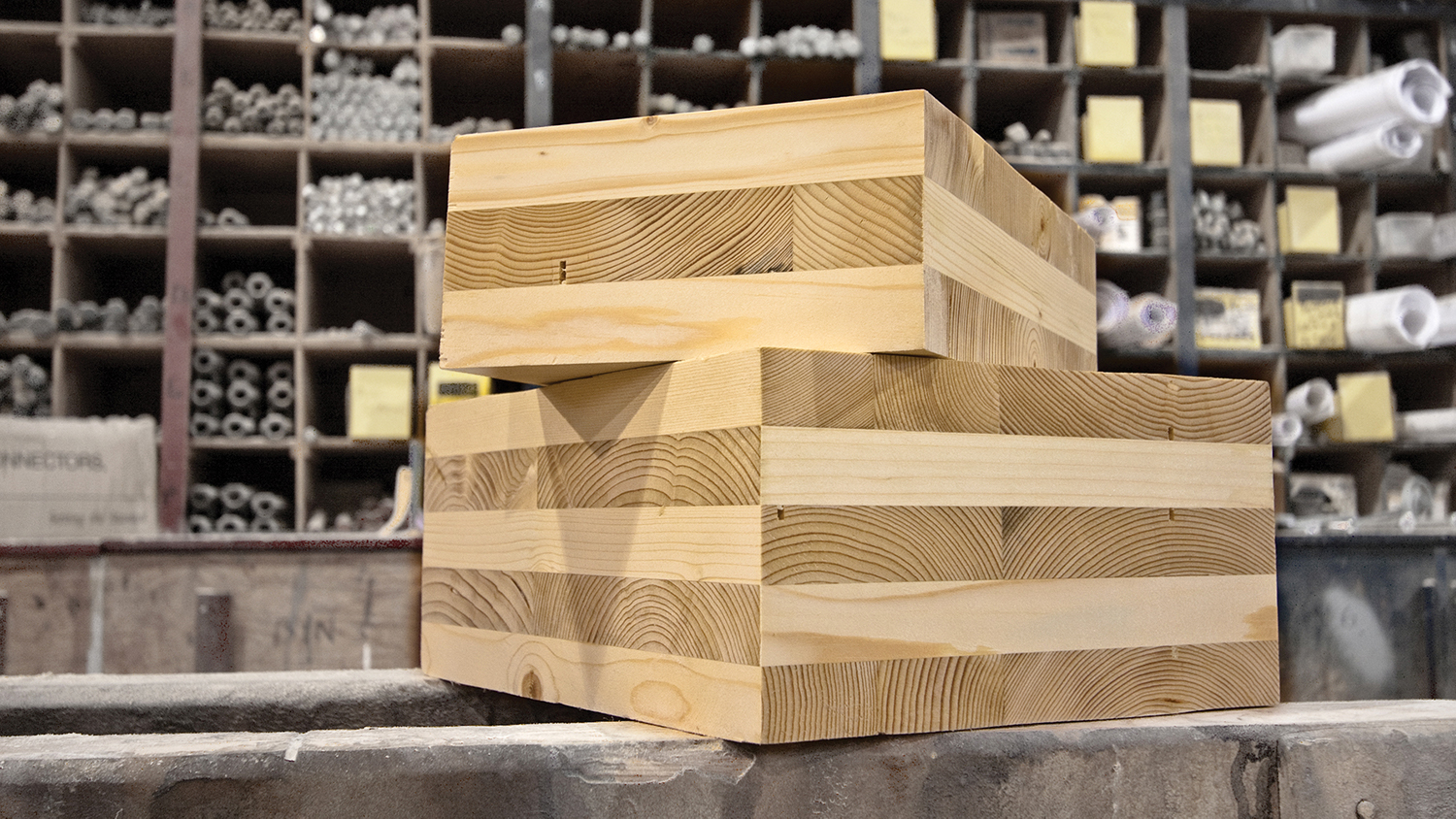Cross-Laminated Timber Creates Sustainable Buildings, Stronger Communities
Is cross-laminated timber the future of affordable, sustainable construction? Forest Biomaterials professor Dr. Stephen Kelley is leading a study with the U.S. Forest Products Laboratory to find the answer.

Story by Julie Johnson
What if there was an innovative building material that can store carbon and create structures that can withstand earthquakes? It’s lightweight but strong. And it’s incredibly easy to assemble. Meet cross-laminated timber, a ground-breaking building solution that NC State University’s Department of Forest Biomaterials is studying.
Cross-laminated timber (CLT) is a type of wood paneling that’s created by stacking layers of 2-by-6 boards in alternating directions, taking advantage of the strength properties of wood. Wood is strongest when it’s cut in the direction of the wood fibers that run up and down the tree, and CLT’s crosswise layers distribute that strength in all directions.
Advocates say CLT is a sound option for sustainability in built environments, and Dr. Stephen Kelley, who is the Reuben B. Robertson Professor in the Department of Forest Biomaterials, is leading a study with the U.S. Forest Products Laboratory to explore the financial and environmental benefits — and costs — of using CLT in tall wood buildings.
Several years ago, Portland, Oregon, granted permits for a 12-story CLT mixed-use structure that housed commercial and residential properties. Architects created a design for the building, but development stopped when the funding fell through.
Kelley and other members of the research team — determined to make good on the fully developed plans — asked the architect to redraw the plans to create a functional equivalent made of concrete and steel. Having the two blueprints side by side allowed the research team to compare the buildings’ carbon footprints and their costs, using publicly available data.
Creating a Circular Carbon Cycle
Key in the comparison are the carbon storage and cost. Kelley says CLT bears good news for carbon storage. With concrete and steel buildings, there is no chance for sequestration, but CLT creates a circular carbon cycle.
The cycle starts in managed forests where foresters plant trees to grow, cut, and replace them. The trees in the forests naturally sequester carbon, and —when cut down and used to construct buildings — continue storing it in the structure.
In the meantime, the commercial forest landowner plants one or two new trees for every tree cut down, and the new growth also starts another cycle of carbon sequestration. When 75 years have passed, the CLT buildings will have continued storing carbon while new trees have sequestered it. If — at the same time — the industry’s backing down on use of concrete and steel buildings, the circular cycle payoff multiplies.
Even when wooden buildings reach the end of their life, they continue storing carbon—where they can be disassembled and repurposed or even tossed in a well-managed landfill. This fact provides a convincing argument for CLT advocates promoting carbon storage as a primary benefit of wooden structures.
Comparing Economic Benefits and Costs
A drawback of building with CLT is current construction costs, but Kelley says that won’t always be the case. In Europe, CLT is much more commonly used, and with multiple competing manufacturers keep cost low. And with new CLT plants appearing in the southeastern United States and two under construction in the northwest, costs in the U.S. will start going down. Competition combined with newer, more efficient equipment assures that.
That’s good news because economically, CLT buildings are a win for communities. “Growing trees, making 2-by-6s at a lumber mill, sending the lumber to a CLT manufacturer, sending a CLT panel to a machining company to cut the holes for doors, windows, conduits and more — if that is all done locally, a tremendous economic benefit results,” says Kelley.
With both direct and indirect jobs created, the multiplier effect in the analysis clearly showed CLT to have a better economic benefit than the concrete building.
Kelley says, “I’m hopeful that the outcome of this work will be that people have better information on the environmental and financial benefits of these alternatives for construction that will allow us to provide a more sustainable, more resilient cities, and also allow rural communities to thrive.”
- Categories:


